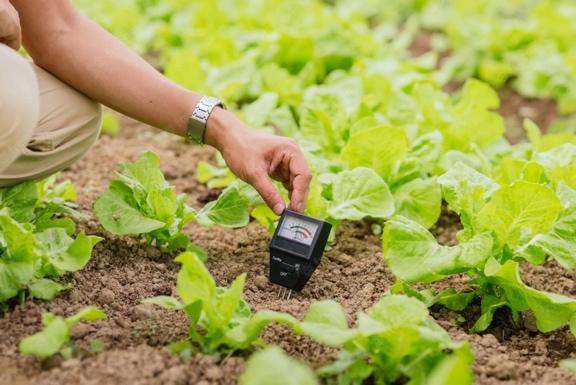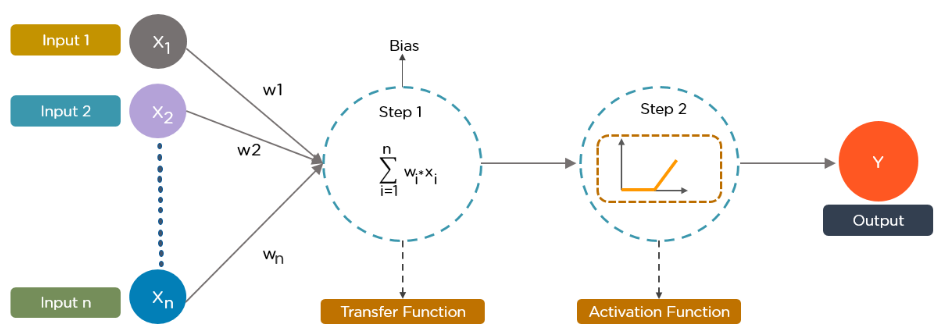Use of Artificial intelligence for the cotton and vegetable cultivation in Black delta and Red soils
Agriculture is the main economy sector of India and contributes more to the socio-economic development of India. For more than 60 % of Indian population, agriculture is the main source of income for the livelihood. Farmers work tirelessly right from the time they sow to the time the seeds reap. The traditional and old methods of agriculture farming need to be embedded with latest technologies, to increase the productivity, to meet the growing population demands and make farmers economically self-sufficient. The technology innovations are reaching the farmers to serve them in monitoring the crop growth, increase their yield and productivity with less use of pesticides and fresh water consumption. Precision agriculture is the trending field to work for the researchers in India. There is lot of research going on across the globe to promote precision and technology in agriculture and reduce the burden on farmers economically and help promote high yields with best innovative practices.
The emerging technologies like Artificial Intelligence, Sensor networks, cloud networks, Machine learning, Robots, Drones and many more things are stepping into farmer’s life and trying to ease their work. Soil plays a vital role for agriculture. Important nutrients and minerals in the soil will result in the crop growth. If nutrients and organic manure are more in soil, more fertile will be the land to grow healthy crops and will in turn helps in more yield. Essential nutrients which soil needs to contain are Zinc, Iron, Nitrogen, Manganese, Copper, Potassium, Phosphorous are very important for good yielding of any crops. In addition to mentioned one’s soil pH level, moisture, temperature, organic manure from animals, Carbon content, Chlorine and humidity along with seasons/weather or climatic conditions and type of soil are important factors to be considered for plant growth. Maintaining and monitoring soil fertility and its nutrients becomes the prioritized task of agriculture. There needs a lot of research to enhance the soil fertility and crop prediction practices in Agriculture country like India. The application that needs to be developed for soil testing need to be robust, economical and user friendly to reach the farmers. The growing environmental changes needs to be considered to make the AI application inception to be more successful, since there are many ideas proposed which might deviate from real values. Cost for deployment is also an issue for unsuccessful implementation. There is lot of agriculture research work happening to come up with the solutions for managing soil and to increase its fertility. Pest control system using artificial intelligence is getting implemented in few places.
The work which I have proposed here, is to help the farmers to test the soil sample by them and cross check with nearby agriculture research department and let them know what is lacking in it by analyzing soil fertility and what has to be added to increase soil fertility which was analyzed in Fig 1 , also this work aims to recommend the crops which can be suitably grown from given soil sample and proper seed selection by request and guidance from Agriculture Department.

This is going to help farmers initially in my native place and upon successful trial I would like to apply in neighborhood places in Telangana, India to better understand about the soil in an easier and better way and take further steps to grow crops in an efficient way to enhance better yielding. This will surely reduce the defective crops and promote healthy crops. There are soil sensors which are available in market which senses the soil and sensed data is given to the system for analysis, Features like PH, Iron, Zinc, Manganese, Nitrogen, Potassium, Phosphorous, moisture content and humidity are used to find the fertility of soil. Using Deep learning Neural Network by using Forward and Back propagation Algorithm technique using Artificial Intelligence, the system will be trained in such a way that the soil fertility, seed selection and its crop friendliness is detected. IOT features along with AI technique will increase the soil testing and monitoring efficiency. Here the data sets used for AI Crop and Seed selection recommends by taking inputs from the District Head office of Agriculture Development in Mancherial, Telangana, India.
Methodology for the AI implementation using Deep Neural Network forward and backward propagation with Soil, Seed details as inputs for the data set creation. This methodology uses below Figure 2 and relevant Linear function (y=x) and Non-Linear Sigmoid activation function gv=1/(1+e-v) to calculate and create best dataset. Sigmoid function uses trial and error method to calculate the desired dataset and use Mobile AP app to share with multiple farmers to let them know best vegetable and Cotton seeds for their soil along with seed selection there by helping farmers to go for best yielding seeds based on soil. Combined with this precision agriculture with drone to spray herbicides, pesticides and drip Irrigation will boost yielding of crops.
Various input parameters used for Data sets are fetched from Agriculture Department for Cotton and Vegetables Seeds. Soil fertility with different parameters like ph, moisture, Manganese, Zinc, Potassium, Nitrogen, Phosphate, Urea and Ammonium content are calculated and feed to the below neural network in AI so that many trial datasets are created and optimized results are stored and feed to mobile AP app, so that farmers can you this for productive farming.
In below Figure 2, the input parameters like Datasets used are of different types and are stored in csv file. One type of data set is Manure_Type has {Organic_Animal_Manure, Inorganic_Manure, Mixed_Manure}, Soil data set has {Black_Delta_Soil, Red_Soil, Rocky_Soil, Muddy_Soil}, Seed data set has {Cotton_Seed_Type, Vegetable_Type, Paddy_Type, Wheat_Type, Jowar_Type, Pulses_Type, Fruit_Type}. In above mentioned data set, inorganic manures can have Nitrogen, Manganese, Potassium, Zinc, Urea, Ammonium, and other essential minerals from external source.
Below diagram (Figure 2) will help in getting best data set for each type mentioned based on Transfer function which has one to 2 hidden layers and two to three inputs like x1 and x2. Activation function contains sigmoid function range which exists from 0 to 1 to calculate the non-linear parameters for each x1 and x2 input given. W1 to Wn are called weights of each neuron for the input variable x1 and x2. Y is the output. Each of below variables are treated as neurons like how human or animal brain will work. After many trials, the neuron gets well trained, so that best data set will be created.

Transfer function calculated with below mathematical formula:
Above transfer function variables are calculated with Matrix. Once the data set is derived with couple of individual variables which I procured from Agriculture Department, these values can be feed as data set and compared with unknown datasets repeatedly until we reach nearest results.
Below is the process diagram for better Fertilizer, Soil and Seed selection to help the farmers to have better yielding in Cotton and Vegetable cultivation using AI.
AI use helps in Soil and Seed selection thereby paves the way for the best yielding Cotton or Vegetable based on Soil. Best seed selection from Agriculture department and Manure combination with Soil helps in increase of fertility of the soil.
Farmers can select required seed for soil and Manure based combination along with Seed selection based on above dataset.
Conclusion:
The model above shown is implemented on some of the lands in Telangana, Mancherial, India where I visited last year. It helped in selection of seed based on soil type for the farmers who had above average yielding in cotton growth. Also, external factors like weather can influence the long taking crops. So, for short run crops, advise from nearest weather will help farmers. But vegetables which grow in few weeks have also good advantage by using AI app for growing very economically and with high yields. I would like to continue my studies on various other lands apart from black delta and red soil. It can help many farmers in long run for cultivation following organic ways, to help Earth and people to have long life with good organic vegetables and Pulses.
Srinivas Vennapureddy
The area where I came from is completely dominated by agriculture. I am also from an agriculture background. As part of many advancement in software fields in Machine Learning and Artificial intelligence, I got a thought and decided to work on a project which can help low and middle class farmers to have moderate to high yielding methods for cotton and vegetables growth based on the type of the Soil and the seed selection in the Telangana, India where Black delta soil and Red soil good for cultivation in Godavari and other area although this yielding will be impacted by external conditions like climate and pesticides.